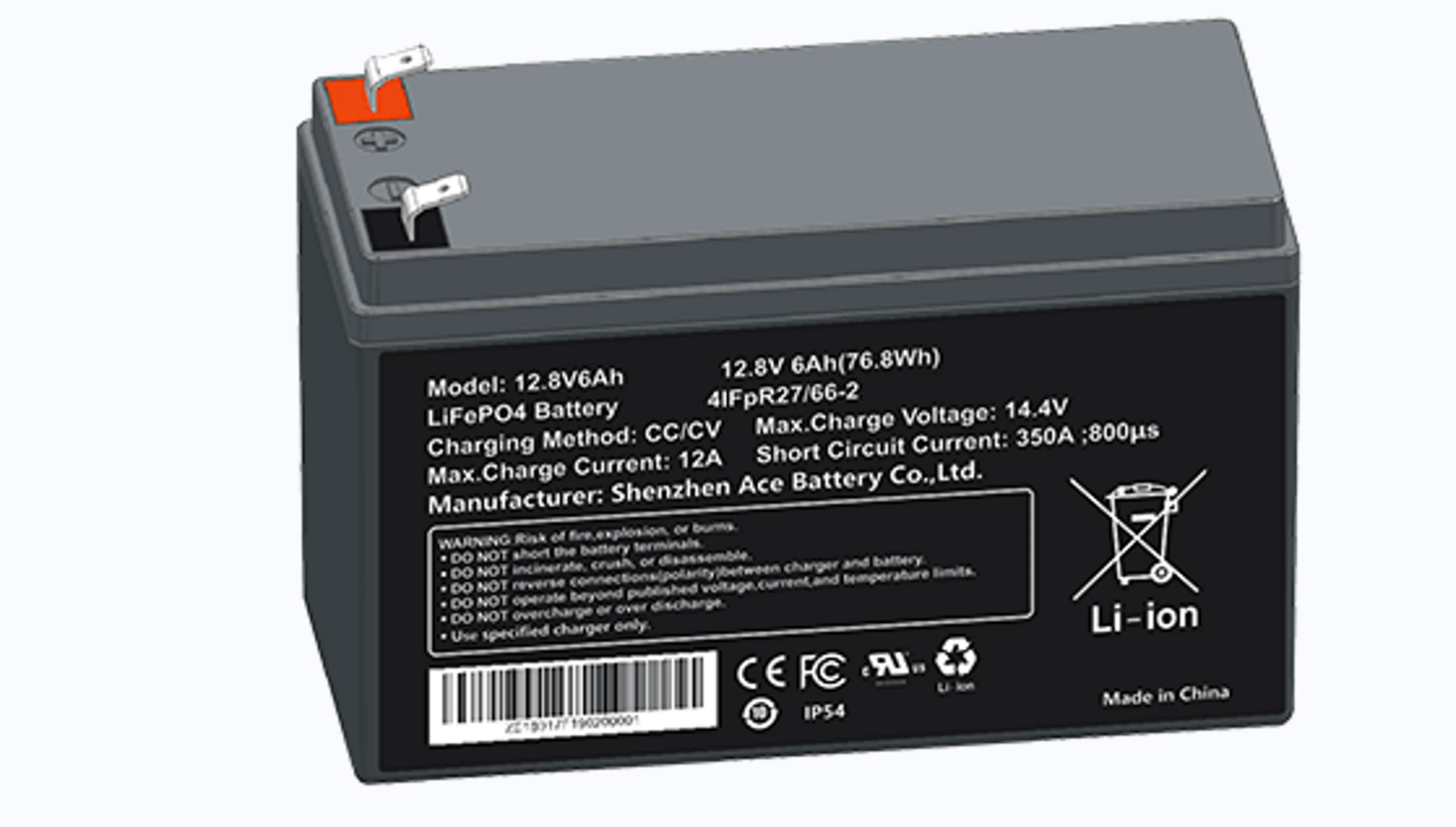
Inquiry
How to Put out a Lithium Battery Fire?
Lithium batteries are generally considered safe, yet with their widespread use by millions of consumers, occasional failures are inevitable. In 2006, a rare breakdown, occurring at a rate of one in 200,000, led to the recall of nearly six million lithium packs. The manufacturer, Sony, explained that in exceptional cases, tiny metal particles could cause a short circuit within the battery cell when they come into contact with other components.
Lithium battery fires have become a growing concern due to their use in everyday devices. Knowing how to put out a lithium battery fire safely is crucial for preventing damage and ensuring safety.
Why Do Lithium Batteries Catch Fire?
Lithium batteries catching on fire is often due to overheating, physical damage, or a manufacturing defect. Understanding why lithium batteries catch fire is essential to prevent accidents.
- They are made from a combustible material.
- Lithium batteries store a lot of energy in a small amount of space. When that energy is released in an uncontrolled manner, it generates heat, which can turn certain internal battery components into flammable and toxic gases.
- They have highly reactive components.
- They are structured like all batteries – two electrodes are separated by an electrolyte. In the lithium battery, the electrolyte is a solution of reactive lithium salts and organic solvents. An electrical charge is transferred from a lithium metal cathode through the electrolyte to a carbon anode. And as with most batteries, the process pressurizes the contents.
- They are volatile when damaged.
- They have stray ions moving between the electrodes that can create microfibers called dendrites. If a dendrite punctures the thin separators keeping the battery elements separate, an internal short-circuit can spark the lithium. If a dendrite punctures the external part of the battery, the lithium reacts with water in the air, generating heat and the possibility of fire. The battery can also overheat, creating a thermal runaway and causing an explosion.
Determining The Type Of Fire
Not all fires are the same—but if you're reading this blog, you probably already know that. Of the 5 classes of fires (A, B, C, D, K), most people would probably guess either Class C (electrical), and that's not entirely wrong. Lithium Battery is usually a "disposable, non-rechargeable" type of battery, the main content of which is lithium metal. If a fire breaks out, it is classified as a Class D metal fire, and a metal fire extinguisher targeting lithium metal must be used to extinguish the fire.
How to Extinguish a Lithium Battery Fire Safely
If you're wondering how to extinguish a lithium battery fire, it's important to act quickly while prioritizing safety. First, move the burning device to a safe, open area if possible, and avoid inhaling the smoke.
Small lithium-ion batteries can be doused with water because they contain little lithium metal. Lithium-metal battery fires can be put out with a Class D fire extinguisher. If a fire extinguisher isn't available, use sand or a fire blanket to cut off the oxygen supply.
Larger battery fires are best handled with a foam extinguisher, CO2, ABC dry chemical, powder graphite, copper powder, or sodium carbonate.
If the fire can't be extinguished, you'll need to let it burn in a controlled way, dousing the surrounding area with water to prevent the fire from spreading.
If you have a battery pack, each cell may burn on a different timetable when hot, so place the pack outside until it completely burns out.
You have a safer choice for home and commercial power storage — redox flow batteries. Leading the industry are vanadium options made with a non-flammable electrolyte solution.
Are Lithium Battery Fires Hard to Extinguish?
Are lithium fires hard to put out? Yes, and here's why: lithium battery fires involve high temperatures and reactive materials that make traditional extinguishing methods less effective. For instance, using water or standard extinguishers may fail to control the flames. Instead, specialized fire suppression tools, like Class D extinguishers or sand, are essential for effectively extinguishing lithium fires.
Can You Use Water to Extinguish a Lithium Battery Fire?
The answer depends on the situation. While water can cool the surrounding area, it is generally not effective at extinguishing the fire itself and can even spread the flames in certain cases. Lithium battery fires are best handled with fire extinguishers designed for chemical fires or by smothering the flames with sand.
Mitigating Risks Of Lithium Battery Fires
With a surge in lithium battery fires, safeguarding your workplace is crucial. Understanding prevention and effective fire extinguishing methods is paramount to ensure lithium battery fire safety and uninterrupted operations. While having safety protocols (see also in ACE Battery’s overview of new UL9540A: 2025 standards) in place remains important, collaborating with a seasoned fire protection company is key. This partnership ensures access to the appropriate fire extinguisher type capable of swiftly quelling a lithium battery fire.
How to Prevent a Lithium Battery Fire
To minimize the risk of a lithium battery fire, it's essential to be vigilant and recognize the early signs of a failing battery. Warning signs such as unusual heat, strange noises, smoke, or a swelling battery can all indicate potential danger.
Here are some practical steps you can take to prevent a lithium battery fire:
- Purchase Batteries from Trusted Brands: Always buy lithium batteries from reputable manufacturers who meet safety standards, such as ACE Battery. Cheap, off-brand batteries are more likely to fail and cause fires.
- Never Recharge Non-Rechargeable Batteries: Avoid attempting to recharge batteries that are not designed for recharging. Overcharging or mishandling non-rechargeable batteries can cause them to overheat and ignite.
- Disconnect After Charging: Once your device or battery is fully charged, unplug it from the charger. Overcharging can cause heat buildup, which is one of the leading causes of lithium battery fires.
- Use the Correct Charger: Always use the charger provided with the device or one that is explicitly approved by the manufacturer. Incompatible chargers may overcharge the battery or fail to regulate power correctly.
- Avoid Extreme Temperatures: Never store or use lithium batteries in extremely hot or cold environments. High temperatures can cause the battery to overheat, while cold conditions can damage the internal components. Check out the LiFePo4 Battery Operating Temperature Range here.
- Charge in a Safe Environment: Whenever possible, charge your batteries in a fire-resistant charging bag. This can help contain a potential fire and minimize damage if the battery malfunctions.
- Inspect Your Batteries Regularly: After installing a battery or completing a recharge, inspect it for any signs of damage, leaks, or swelling. If you notice any issues, do not continue charging or using the battery.
- Remove Batteries Before Storing Devices: If you’re storing an item for a long time, always remove the battery. This reduces the risk of leaks or overheating when the device isn’t in use.
- Unplug Overheating Chargers: If you notice your charger becoming excessively hot, unplug it immediately. Store the charger away from combustible materials and allow it to cool before reusing it. In some cases, it might be necessary to replace the charger or call emergency services.
Related Article:
ACE Battery is committed to becoming a global leader in clean energy with digital and intelligent solutions and services, ushering in the global energy transition.
Our expert will reach you out if you have any questions!

